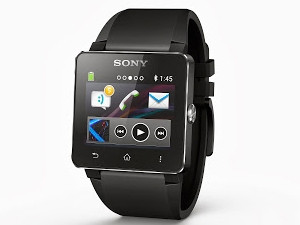
Sony yesterday unveiled its second-generation SmartWatch, with water-resistant and near-field communication (NFC) capabilities.
Fuseware CEO Mike Wronski says the SmartWatch 2 is a significant upgrade from the initial smart watch and has raised the bar quite a bit for any other competitors looking to enter this space.
"The NFC integration was a must, as this allows for seamless connectivity with other devices. The battery life, however, is not acceptable for a watch - it needs to be recharged every three to four days, which would end up being quite a burden to the end-user," he adds.
Sony has focused its attention on app expandability with the SmartWatch 2, enabling personalisation through the Android platform.
SmartWatch apps give the user access to functions such as answering calls by a touch of the wrist, taking photos using a smart camera app and controlling presentations remotely using Presentation Pal. The SmartWatch also helps track fitness with the Runtastic app and enables the reading of previously downloaded e-mails, even when it's not connected to a smartphone.
According to head of companion products at Sony Mobile Communications, Stefan K Persson, the company is no newcomer to the smart watch market and introduced its first Bluetooth watch in 2007.
"Competitors are only now launching first-generation devices, while we are already launching a third-generation device with all the insight gained from over half a million customers, combined with Sony's wealth of technology expertise to create the best ever smart watch experience," adds Persson.
The need
The real question remains whether the smart watch will take off; Wronski says it might be a hit with the younger tech-savvy demographic. "But unless smart watches really add value to the end-user on top of all the other devices they already own, it may just be a fad."
He adds that regardless of this, all signs point to the idea that wearable computing is gaining traction. "We will soon see a slew of other such garments - glasses such as Google Glass, socks, shoes, headbands, etc, all having computing and connectivity features."
Wronski believes cross-device integration is the key to success in the wearable device market. "A smart watch has physical limitations that will always be present, so ensuring it interacts seamlessly with tablets, smartphones and home media devices is a must."
He says unfortunately the local market is just too small for such a niche device. "I don't really see it taking off in SA. It doesn't really solve any true African problems, so the adoption of this device may be limited to the confines of younger, wealthier early adopters looking for the 'next big thing' to stand out."
Wearable tech race
ABI Research forecasts that by 2015, 485 million wearable computing devices will be shipped annually. Currently, ABI says about 61% of the wearable technologies market is attributed to sport/activity trackers. However, the research firm says a new category of smartphone-compatible watches are beginning to emerge.
The most highly-anticipated wearable tech device is Google Glass, which is expected to make its way into the consumer market by 2014, according to Google CEO Eric Schmidt.
The Glass device is currently being tested by developers and has created many concerns about security and privacy, as they delve deeper into the device's capabilities and software.
Meanwhile, the search giant also indicated it is working on a smart watch design. Similarly, Apple, which could do with the innovation boost, also shared its ambitions to enter the wearable tech market.
Apple has been secretive about its smart watch plans, with CEO Tim Cook only mentioning that the market is "ripe for exploration".
Cook has, however, shared his thoughts on Google Glass. He believes Glass is not likely to be a mass-marketed device and it would appeal only to certain markets.
Rumours and leaks surrounding many other manufacturers' plans to bring out smart watches, including Microsoft and Samsung, have slowly died down as well.
Share